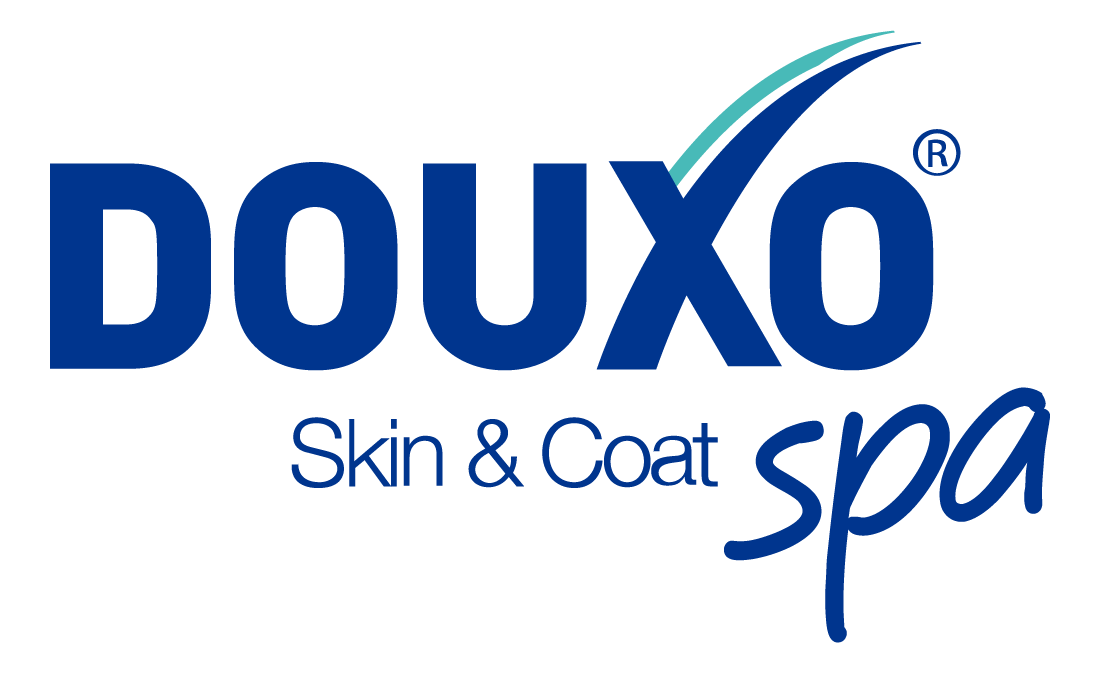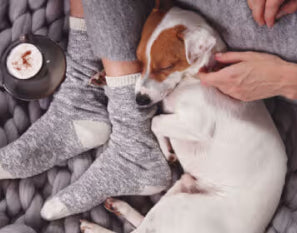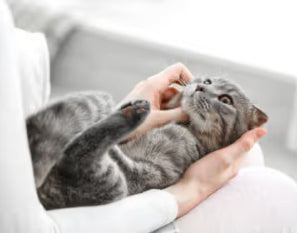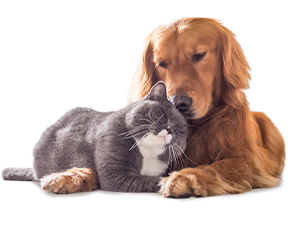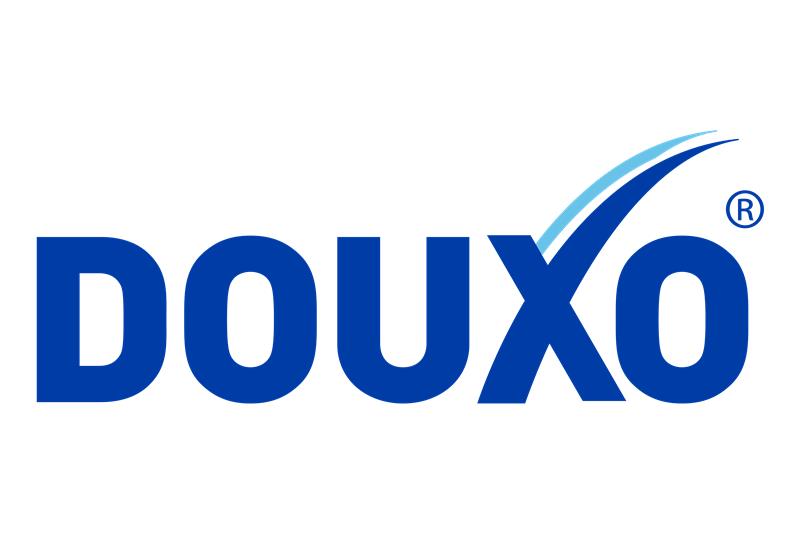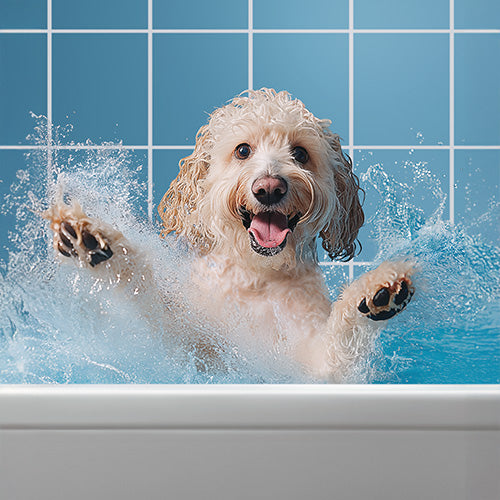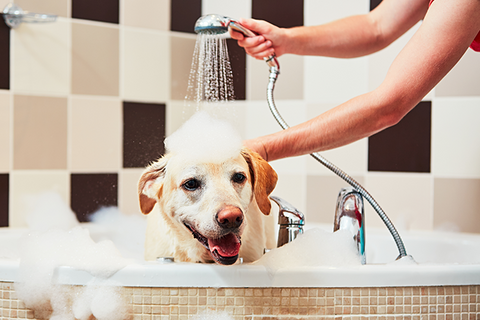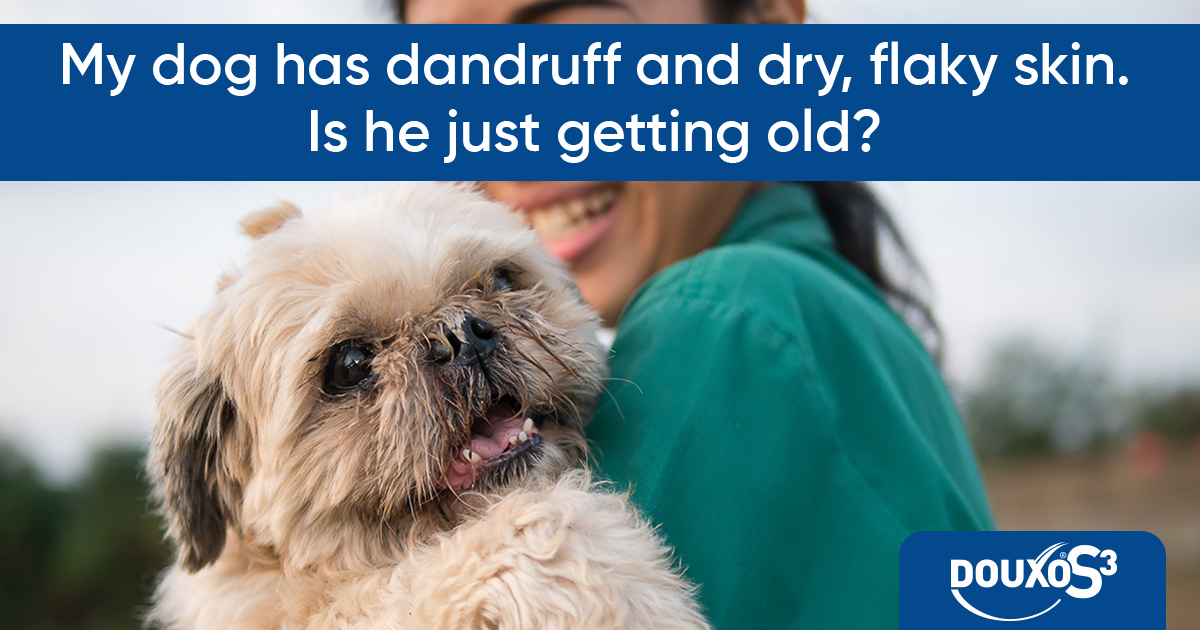
My dog has dandruff and dry, flaky skin. Is he just getting old?
The golden age also comes to dogs… and while they look bright and happy, you may have noticed that something has changed on their skin. It could be some scales on their back or just a little lack of that beautiful shine of theirs… As dogs get older, their skin cells decrease their ability to regenerate, affecting the quality of the coat and resulting in visible signs of aging. In elderly dogs, the hair follicles become less active, so new hair growth slows down, and the coat begins to thin. Sebaceous glands also decrease in number, so less sebum is produced, causing the coat to lose its shine and become dull. As your dog ages, a loss of pigment cells is the responsible for causing a greying coat.
So, it is just right to assume that these skin signs are a normal part of ageing, but here is a little warning sign: they can also be one of the first signs of underlying disease. Elderly dogs are at an increased risk of developing a wide range of illnesses, so it is important to seek veterinary advice as soon as you notice any changes to your dog’s skin or coat to ensure that any health problems are not missed.
Ageing in dogs
Many signs of ageing can be easily recognised by owners, especially the greying of the coat and changes to its thickness and texture. However, the onset of ageing varies between individuals depending on breed, genetics, nutritional stasis and environmental factors. Generally, larger breed dogs will have an earlier onset of ageing, and a shorter life expectancy compared to many smaller dog breeds. Other visible signs include duller coat, loss of skin elasticity, and increased skin pigmentation…yes, the same as in humans, also canine skin can develop moles, generally without danger to the skin itself.
Why has my dog developed dandruff and dry, flaky skin?
Often, finding dandruff and scales in your dog’s coat is an indication that your pet may have an underlying illness. But we already know that in elderly dogs, as their skin and coat start to change, they are also more likely to develop underlying health problems. So, it can be difficult for owners to decide if skin changes are a normal part of ageing or due to illness, so you should always get your dog checked by your vet. This will enable any illnesses to be diagnosed early and prevent your pet’s skin and coat from deteriorating. Be aware that now, more than ever, it is important to use consistently high-quality skin products on your dog’s skin!
Other causes of dandruff and dry, flaky skin in elderly dogs include parasites, dermatophytes (ringworm) that are always possible to suffer. However, allergies are less likely to start later in life, while endocrine diseases become more common. As the immune system becomes impaired, some immunomediated diseases make their appearance, and also the incidence of neoplasms gets higher.
Underlying disease can affect the skin in various ways. Alongside dandruff and dry, flaky skin, you may also notice that your pet has sore, reddened and inflamed skin, patches of hair loss and they may be itchy. Let’s have a little more information on “scaly” diseases!
Parasites
Parasites such as fleas and mites are a common cause of dandruff and flaky skin in dogs of all ages, so your vet will usually want to check for signs of parasites first. The presence of some parasites, such as the skin mite Demodex, may also indicate that your elderly pet has an underlying illness, so your vet may want to check for other diseases, as well as treat any parasites present.
Hypothyroidism
Hypothyroidism is one of several endocrine diseases that may affect older dogs, especially medium to large-breed dogs. It occurs when the thyroid no longer produces sufficient thyroid hormone, commonly resulting in gradual skin changes, such as a dull, dry coat with dandruff and areas of hair loss. Owners may also notice that the hair does not regrow after clipping and that their dog has become lethargic, gained weight, and no longer wants to go on walks.
It can be challenging to diagnose hypothyroidism as signs of illness are vague. However, once treatment has been started, your dog should recover within a few weeks, and skin signs will usually completely resolve within a few months. Hypothyroidism is a lifelong illness, so treatment will need to be continued for the rest of your dog’s life.
Hyperadrenocorticism (Cushing’s Disease)
Hyperadrenocorticism, otherwise known as Cushing’s disease, results in an excessive production of the hormone cortisol. Raised cortisol levels can cause increased drinking and urination, increased appetite, lethargy, and an enlarged abdomen. In addition, skin changes are common with symmetrical hair loss, lack of hair regrowth after clipping, skin thinning, and a dull coat. Dogs affected by Cushing’s disease will require life-long treatment, but signs of illness should completely resolve, though it can take a few months for skin signs to heal.
In some cases, dogs can develop a form of Cushing’s disease as a result of medication they are receiving. Synthetic steroids have the same effect on the body as an excess of natural cortisol, so this is always worth a discussion with your vet if your dog has these signs and is on long-term steroid medication.
Pain
Even if they are not as worried about their appearance as cats, dogs also groom themselves. If they cannot do it properly, they may develop dry, flaky skin, a dull coat, knots, and tangles. These coat changes may be a sign that your pet is in pain and unable to reach all parts of their body to groom, which can occur with conditions such as arthritis, which affects your dog’s mobility, and dental problems.
Dementia
Another factor not to be neglected is a loss of interest in self-grooming, which can lead to decreased self-grooming and an unkempt coat. This is not uncommon in dogs living with the early stages of canine cognitive dysfunction (senility or dementia).
Using skin products unsuitable for dogs
Human products should never be used on your dog’s skin, as, among other differences, humans have a different skin pH than pets. Skin and hair products not designed for dogs can cause skin irritations, especially in elderly pets with sensitive skin.
Caring for your elderly dog’s skin
We can help keep our elderly pet’s skin comfortable and in the best health by regularly bathing to help protect sensitive and delicate skin against damage from the outside world. DOUXO® S3 SEB shampoo helps reduce the presence of dandruff and scales while also hydrating the skin and improving its protective barrier. This shampoo can be used regularly, but for convenience, DOUXO® S3 SEB mousse can be used between baths to help keep skin flake-free and the coat shiny.
Feeding your elderly dog an optimal diet can also help keep their coat glossy and healthy, so speak to your vet for advice on the best diets and supplements for ageing dogs that will also benefit their skin health. Your vet may advise increasing the omega fatty acid levels in your pet's diet or adding a skin supplement to help maintain healthy skin and keep your dog’s coat shiny, reduce ageing signs and prevent dry, itchy skin from developing.
Skin problems can be uncomfortable and painful for your dog, so always seek advice from your vet if you notice any new skin changes. It is easy to assume that normal ageing processes are responsible for changes to our elderly dog’s coat…. Still, your vet will be able to diagnose any concurrent underlying illnesses, and advise how to care for your elderly dog’s coat to keep it healthy and shiny!
